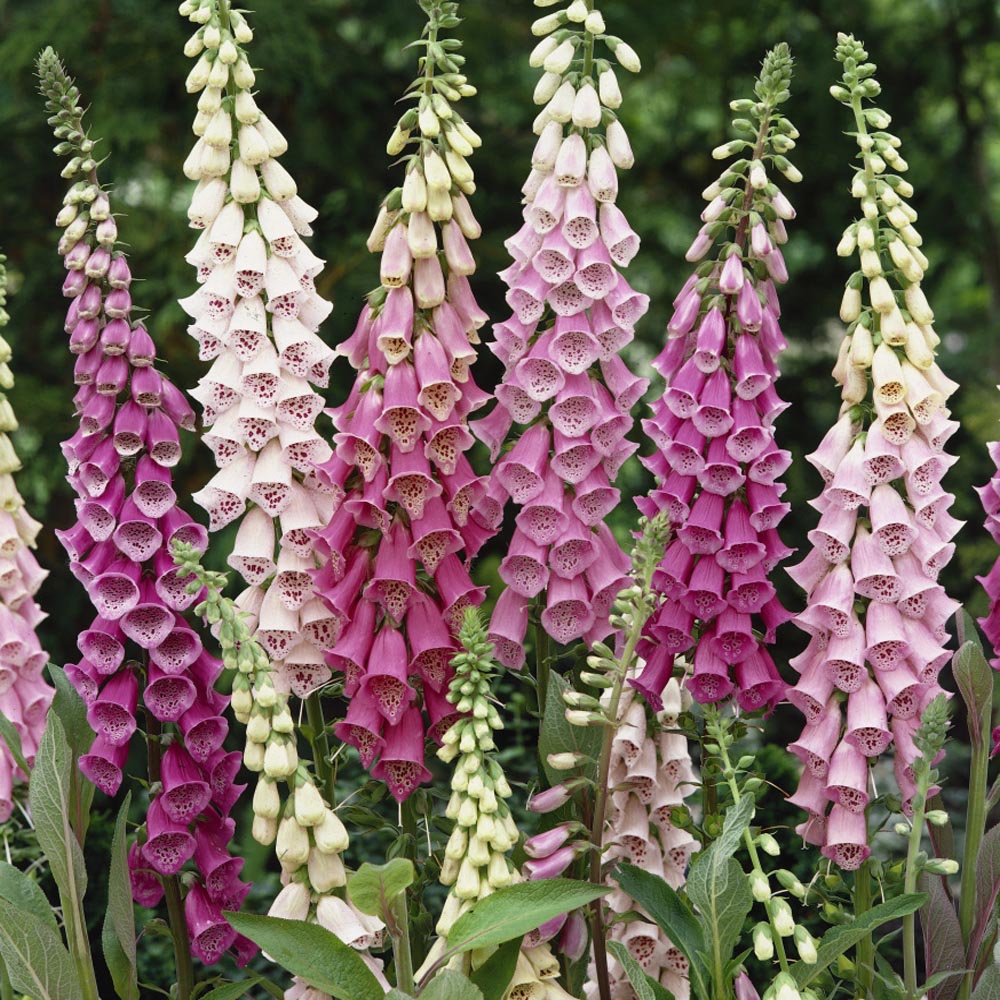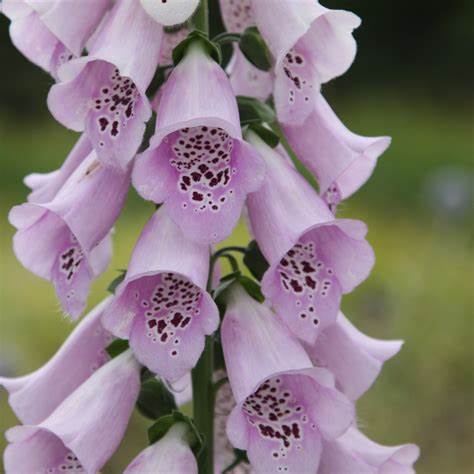
Foxgloves (Digitalis purpurea) herald in the glorious days of spring and are a mandatory inclusion in my garden each and every year. And the buzzing bees adore them.
Its officially autumn/winter and tis the season to start seeking out and collecting foxglove plants, either in punnets or small singular pots. In my blogs I seem to focus on my most favourite plants, however, there always seems to be a caveat that I have trouble in their successful cultivation. But not with foxgloves, they are so, so, easy peasy, even for a beginner or novice. I have been growing them successfully both in pots and in the garden for about the last 10 years or so and I am rarely ever disappointed in their magical beauty.
Foxgloves possess tall, elongated spires or columns clothed with bell shaped velvety flowers which surround the stems. The flowers can be as large as 6cm long. During the season, as the stems climb forever higher and unfurl further upwards, they reveal a new succession of flowers. It is said their stems will grow to a height of 1.2m to 1.5m in height but mine grow well over the 2m mark and require good staking.
My undoubted favourite is the pure white flowering variety with their rich royal purple freckles nestled deep within their flower throats. Purples of any hue/shade are of course always worth having, and the apricot is a pure stunner. The strawberry pink varieties in colour are a rather washed-out affair, and thus I try to avoid them. Though maybe I have just yet to meet the right one.

They are just superb massed planted, akin to towering flowering treescapes. However if you are limited in space, a small group of three or so in a loose triangle shape, will still ensure you are rewarded greatly. For myself, I always ensure that I have at least a dozen or more growing in a designated area dedicated solely for them, cheek to jowl, so as to fully appreciate their collective big bang of a blooming bonanza. Their foliage is in itself also quite attractive with large crinkly woolly grey green leaves which grow in the form of a rosette creating a large mound of about 30 or more in width.
D. purpurea is native to western and central Europe and as far north as Scandinavia and are found on the slopes of hills, on sub-alpine slopes and in shady meadows. Remember their natural habitat teaches us valuable information for their successful growing in a garden.

Medicine and Poison
Foxgloves are highly poisonous, though personally I have never heard or encountered a poisoning in either humans, animals or pets. In the past the plant was used as a remedy for chest complaints, scurvy and ulcers. Later it was used as a diuretic cure and as a cardiac tonic. Today digitalin is recognised in the treatment of heart complaints. Digitalin reacts immediately on the muscles of the heart, making the systole more energetic and expanding the diastole, slowing down and regulating the heart beat, while at the same time increasing blood pressure. Or something like that.
Cultivation
In my experience they detest hot afternoon sun especially in the high heat of summer. Positioned either on the east, with only morning sun or under the protection of deciduous trees and receiving full winter sun and dappled shade in the hotter months are the ideal conditions for their successful cultivation. Repeated generous watering are essential when high temperatures arrive and are prolonged. Any soil will do, however, like most plants the better the soil the greater are the results. I plant each one with a generous amount of Seamungus, Rooster Booster and homemade compost. Generally they are a biennial but if you are lucky enough and the surrounding soil is rich enough, they will pleasantly self-seed around the parent plant. Fungal disease and caterpillars are supposedly there only foes but for me neither have caused any harm or damage.

Design
In my own garden, the collective spiral stands of them are positioned directly next to a backdrop of an adjacent bed of delphiniums. The combination of the two, when in full bloom are just sublime and forever memorable, truly a gift delivered from the gods of nature. You can view a short video of a garden created by Matuesz Dekoruje to see a masterful and wonderous example of foxgloves and delphiniums massed together. You can access it either on my Facebook page, Ned McDowell Gardens or directly on his own Facebook page.
Happy gardening and have fun,
Regards Ned McDowell